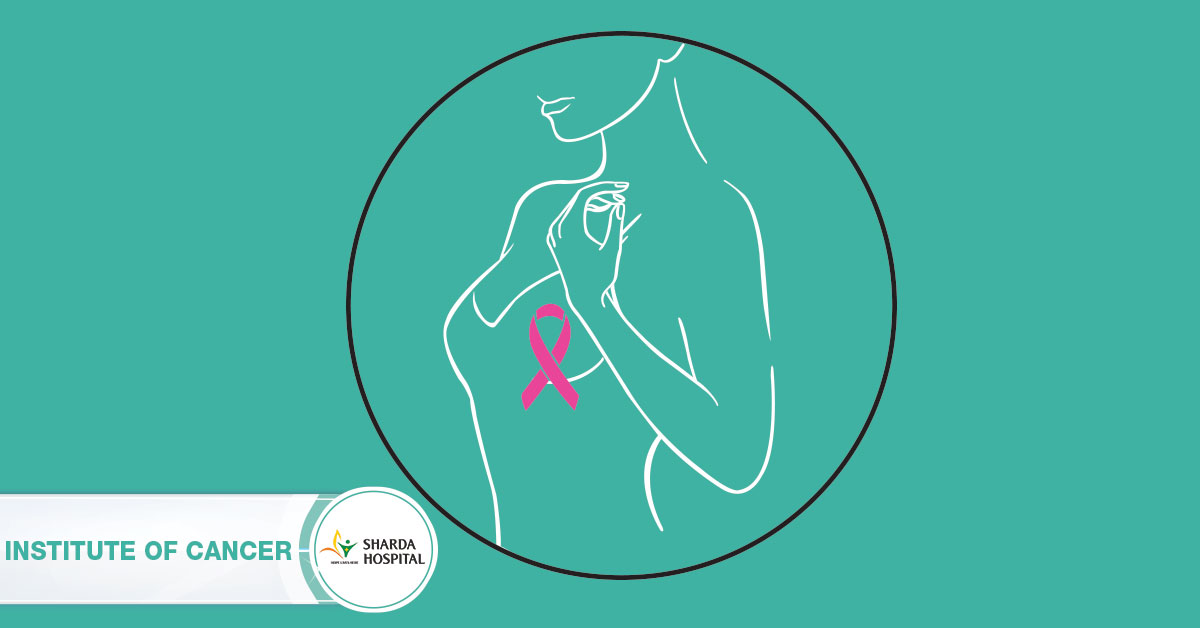Symptoms like a lump in the breasts and unexplained swelling or redness on the breast often scare women. As the awareness about breast cancer is increasing for good, it is also driving women towards vulnerability. Even a normal breast pain alarms them in thinking the extreme.
Dr. Nimmi Chutani, HOD, Gynaecology & Obstetrics, states, "An overflow of contradictory information trumpeted by the unreliable sources has led to public confusion." Many patients are too apprehensive about their chances of developing breast cancer just because of these myths.
So, we've gathered evidence-based truths, against these commonly held myths about breast cancer to help people understand the difference.
Myths About Breast Cancer, Busted
Several times patients are in confusion regarding their condition. Often, it's the myths or lack of information on the subject that restricts them to consult a doctor or undergo a particular treatment. Read along to discover the facts behind those myths of breast cancer.
-
Breast Removal Is the Only Treatment for Breast Cancer
Breast removal treatment, also known as a mastectomy, is one of the many treatments for breast cancer. Other than mastectomy, treatments like lumpectomy (tumor removal, leaving breast intact), chemotherapy, radiation therapy, and hormone therapy are also used by doctors to combat cancer.
Though none of these treatments fully cure the disease, they inhibit cancer growth depending upon the type and stage of cancer. Often, even after getting these treatments, cancer can reoccur. Therefore, it is necessary to undergo regular check-ups to avoid the worse.
-
Breast Cancer Tests Can Lead to Spreading of the Cancer
X-rays or Mammograms use very minute doses of radiation and cannot cause the spread of cancer. In fact, mammograms are the best tests for diagnosing breast cancer. These tests allow for early treatment and better results.
According to research and statistics, mammograms reduce the probability of death due to cancer. Thus, most doctors recommend an annual mammogram starting at age 40 to avoid the risk of breast cancer. Besides, if a patient has dense breasts or is under age 50, ask the doctor about getting a digital mammogram.
-
Wearing a Tight or Under-Wired Bra Increases the Risk of Breast Cancer
Claims are made that wearing an underwire bra constricts the lymphatic system of the breast. As a result, it causes toxins accumulation leading to breast cancer. However, the research and studies prove otherwise. The word is that neither the type of bra one wears nor the tightness of it has any connection to breast cancer risk.
So, it is safe to say that until and unless there's proper evidence backing this claim, it is just a false story.
-
A Lump in Breast Always Directs to Breast Cancer
According to Cancer Research report, 90% of the lumps in women breasts are benign, meaning noncancerous, particularly in women younger 40 years of age. If by any chance, a lump develops in the breast area, it may be due to changes in the breasts, cysts, or other conditions.
Often, other symptoms like swelling on the breast, nipple retraction, nipple discharge, etc. are more prominent signs of breast cancer. Therefore, it is best to consult a doctor if a patient observes any changes at all in the breasts. A doctor may recommend an ultrasound, MRI, mammogram, or biopsy to determine whether a lump is cancerous.
-
Breast Cancer Only Affects Women
Even so, breast cancer mainly affects women, this condition is also reported to be present in men. Since breast cancer has been co-related with women, men are not aware of its probability.
As per a report, it is found that in 2018 around 2,550 men are likely to be diagnosed with this disease. So, even for men, it is important to self-exam themselves in order to receive the right treatment at the right time.
-
Patients with Gene Mutation BRCA1 or BRCA2 in DNA Are Likely to Develop Breast Cancer
According to the National Cancer Institute, not every woman who carries BRCA1 or BRCA2 gene mutation is at the risk to develop breast cancer. However, a woman who has innate (inherited) a damaging mutation in BRCA1 or BRCA2 is more likely to develop breast.
The genetic mutations from first-degree relatives (such as a mother or sister) or second-degree relatives (such as an aunt or cousin) are most responsible for triggering breast cancer.
For people who discover they have the harmful mutation, proactive measures like taking a hormonal therapy or undergoing surgical process can reduce the risk of breast cancer.
-
Breast Cancer Cannot Reoccur After Mastectomy
Even though after the entire breast removal in a mastectomy, breast cancer can still reoccur at the original site. Besides, it can also spread to the other parts of the body.
According to a recent study, it was found that patients who underwent mastectomy experienced a nodal recurrence of cancer within 10 years.
Though recurrent cancer is treatable with a mastectomy and radiation therapy, chances are cancer may keep on recurring. Simply put, the more cancer affected lymph nodes at the time of the mastectomy, the higher the probability of breast cancer recurrence.

 Aug 21, 2018
Aug 21, 2018
 May 30, 2018
May 30, 2018 May 10, 2018
May 10, 2018 May 17, 2018
May 17, 2018